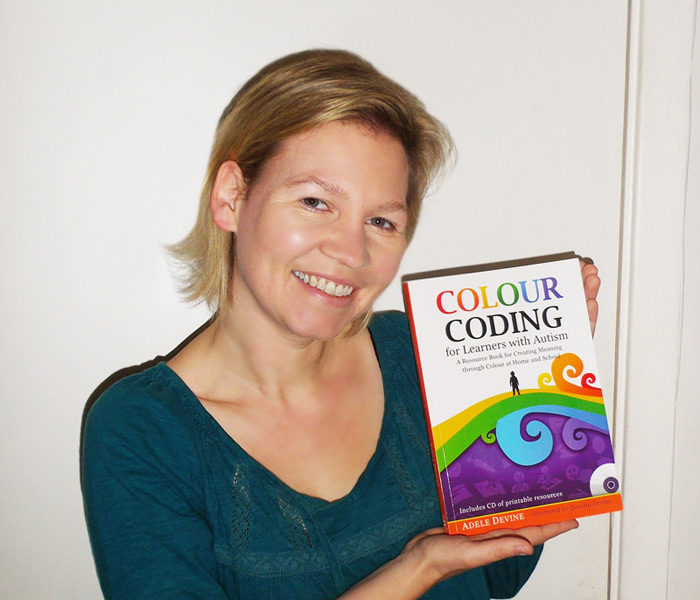How Should You Tackle The Fussy Eating Habits Of Children With SEN In Early Years?

Adele Devine offers some advice on what to do when that special child in your setting refuses to eat…

- by Adele Devine
- Early years and SEN specialist, author, keynote speaker and trainer Visit website

Mealtimes can be a terrifying ordeal for little ones, and particularly those with special educational needs.
The idea of eating ‘yuck’ foods in a foreign environment may cause them extreme anxiety. At home, set routines will have been built up without the parents being aware of them. The supports a child expects will already in place – maybe they won’t eat at all if they’ve not had a snack. Perhaps they’ll refuse eat without the TV on. Or maybe their food has be served in a ‘Thomas’ bowl, consist of a specific set of ingredients, be blended to an exact consistency and heated for exactly one minute in Mum’s microwave… Oh, and did I mention that they’ll only eat for Mum?
Needless to say, if a child refuses to eat at school or nursery, knowledge of home routines can be invaluable.
It’s important to never judge children who struggle at mealtimes. Maybe you have children who sit beautifully at the table and ate every meal. Maybe you can go anywhere in the knowledge your child will eat up their meals – because they knew if they were start being remotely fussy, there’d be no leeway. But then maybe you’re lucky?
We cannot base what other children will do on our own personal experience. We need to take each case individually, try to see the mealtime through the child’s eyes and help them past any barriers.
No matter how much we want a child to eat, no matter what pressures we are under – retaining the child’s trust is paramount. Be firm, but never ever force a child to eat.
Case study – a home visit for 4-year-old Henry
Henry came into school with food he would eat at home, but absolutely refuse to at school, even if it was the same food. He would avoid the spoon with great skill, moving his head and squirming under the table. Lunchtimes were an ordeal, and his refusal to eat was a real cause of concern for everyone.
Mum told us that Henry was very fussy at home, but that he would eat. She was worried, too. Henry was doing whole days at school that were too long for him to complete without eating, and we didn’t want ‘Not eating’ at school to become routine.
The home visit We went to see Henry eating lunch at home and noticed that Mum used a very firm voice with him. We also noted the language she used for his foods – for instance, she would call his yoghurt ‘Yog yog’.
Henry ate his food in a little seat in the lounge with Baby TV playing on the big screen to distract and motivate him. Mum let us step in and feed him at home, which allowed us to meet him halfway – and made us very happy when Henry ate for each of us.
Progress The next time Henry had lunch at school we were armed with Mum’s home strategies and knew that getting him to eat was achievable. Over the next term Henry made great progress, and eating at school became less of an issue. He even sat beautifully at the table for the entire duration of our school Christmas dinner.
We would never have anticipated this progress in such a short time – illustrating the difference a home visit and good home/school communication can make.
Case study – pudding first for 4-year-old Eddie
Eddie was not impressed with dinnertime in the school hall. He wanted to eat the biscuit, but did not seem to get that the savoury should come first. He ended up having a meltdown about it and needing to leave the lunch hall.
A new approach We held a team meeting and talked about what to do. We decided to move our dinnertime to the early years classroom while our class developed food tolerance and sitting skills, since the eating was more important than the sitting in the school hall. I suggested that we let Eddie have both his dinner and pudding on the table at the same time, to see if he would eat dinner after pudding.
Progress Eddie ate up his biscuit and then tried the baked potato. He wouldn’t eat from a fork, but lifted the potato with his hands. He proceeded to eat only the potato, but we continued to have other foods on the plate.
In time, Eddie started to try the other things on his plate. At first these were hidden under the potato, but as time went on he began lifting bits of ham and putting them in his mouth. During this time he was sitting at the table for dinner with very little support. We moved to not having his pudding within sight, and he continued to eat up his savouries first without any issue. Instead, he would go into the dinner hall afterwards and request ‘pudding’ by handing over a Picture Exchange Communication System symbol.
The next step was to introduce eating off a fork, which he also mastered. We started to support Eddie with feeding himself off the fork by loading it with food and gently directing his arm to lift it. Eddie amazed us all when he started to lift these mouthfuls up on the fork and get them in his mouth – showing how much a difference a compromise can make!
Final thoughts
Eating can be a huge issue. It’s not like getting a child to cooperate with doing an inset puzzle or threading a string of beads – if they don’t eat they could die!
Unfortunately, our adult concerns will feed the child’s anxiety. There are children who have taken food refusal to extremes and ended up tube fed. This is rare, but still happens. We cannot relax and think that they will eat if they are hungry enough – but they must not ever sense adult anxiety. We must radiate calmness and control.
If a child does not eat at school, address the issue immediately. Communicate with parents and try to find some middle ground.
Recipe for success
10 ways to address problems at mealtimes…
1. Communicate with home as soon as you see an issue.
2. Try to do a home visit to observe how the child eats in their comfort zone.
3. Begin with home foods served in the same pots at the same temperature.
4. Try mealtimes away from noise and too many people.
5. Allow for longer mealtimes to reduce pressure.
6. Use distractions such as a big screen (if that has been used at home).
7. Tackle one issue at a time and communicate this to home.
8. Use plates, cups and cutlery that suit the child, such as the Kura Care Children’s Cutlery Set available from NRS Healthcare.
9. Use rewards, praise or tokens (if the child will understand them).
10. Try to let the child make choices; accept that there are some ‘yuck’ foods or textures that they will not eat.
Adele Devine teaches full time in an autism specific school and is co-founder of the software developer, SEN Assist. For more information, visit www.senassist.com or follow @AdeleDevine










